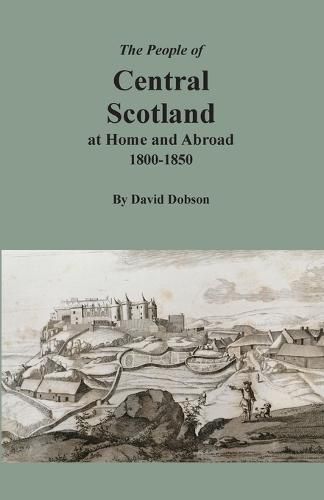Readings Newsletter
Become a Readings Member to make your shopping experience even easier.
Sign in or sign up for free!
You’re not far away from qualifying for FREE standard shipping within Australia
You’ve qualified for FREE standard shipping within Australia
The cart is loading…






This title is printed to order. This book may have been self-published. If so, we cannot guarantee the quality of the content. In the main most books will have gone through the editing process however some may not. We therefore suggest that you be aware of this before ordering this book. If in doubt check either the author or publisher’s details as we are unable to accept any returns unless they are faulty. Please contact us if you have any questions.
Central Scotland includes the counties of Stirlingshire and neighboring Clackmannanshire, which stretch from Loch Lomond and the Trossachs to the upper reaches of the River Forth. The region is partly in the Highlands and partly in the Lowlands. Most of the early emigration from Central Scotland was by individuals or family groups, but in 1773 the Arnprior Emigration Society formed by farmers in west Stirlingshire organized an emigration to Vermont. In the early 19th century three other emigration societies in Stirlingshire"""Alloa in 1817, Balfron in 1821, and Deanston in 1821"""organized groups of emigrants bound to Upper Canada. The entries in this work, to some extent, enable family historians in the Americas, Australasia, and other locations to link with their kin who remained in Scotland. The Statistical Account of Scotland (OSA), compiled between 1791 and 1799, and the New Statistical Account of Scotland (NSA), compiled between 1832 and 1845, are especially helpful for understanding Scottish society of the period. These can be consulted in major libraries, such as the National Library of Scotland, or online. In the late 18th century, the regional economy was based on farming, textiles, and mining. The existence of iron and coal enabled industrialization to occur relatively early. Coalmining rapidly expanded due to domestic demand and industrial expansion, especially the adoption of the Bolton and Watt steam engines in Scottish textile mills. Supplies of flax were imported from the Baltic, and the linen manufactured became an important export for Central Scotland. The nearly simultaneous Agricultural Revolution caused the merging of small farms, creating a rural labor surplus that either moved to the burgeoning factory towns in the Lowlands or emigrated.
$9.00 standard shipping within Australia
FREE standard shipping within Australia for orders over $100.00
Express & International shipping calculated at checkout
This title is printed to order. This book may have been self-published. If so, we cannot guarantee the quality of the content. In the main most books will have gone through the editing process however some may not. We therefore suggest that you be aware of this before ordering this book. If in doubt check either the author or publisher’s details as we are unable to accept any returns unless they are faulty. Please contact us if you have any questions.
Central Scotland includes the counties of Stirlingshire and neighboring Clackmannanshire, which stretch from Loch Lomond and the Trossachs to the upper reaches of the River Forth. The region is partly in the Highlands and partly in the Lowlands. Most of the early emigration from Central Scotland was by individuals or family groups, but in 1773 the Arnprior Emigration Society formed by farmers in west Stirlingshire organized an emigration to Vermont. In the early 19th century three other emigration societies in Stirlingshire"""Alloa in 1817, Balfron in 1821, and Deanston in 1821"""organized groups of emigrants bound to Upper Canada. The entries in this work, to some extent, enable family historians in the Americas, Australasia, and other locations to link with their kin who remained in Scotland. The Statistical Account of Scotland (OSA), compiled between 1791 and 1799, and the New Statistical Account of Scotland (NSA), compiled between 1832 and 1845, are especially helpful for understanding Scottish society of the period. These can be consulted in major libraries, such as the National Library of Scotland, or online. In the late 18th century, the regional economy was based on farming, textiles, and mining. The existence of iron and coal enabled industrialization to occur relatively early. Coalmining rapidly expanded due to domestic demand and industrial expansion, especially the adoption of the Bolton and Watt steam engines in Scottish textile mills. Supplies of flax were imported from the Baltic, and the linen manufactured became an important export for Central Scotland. The nearly simultaneous Agricultural Revolution caused the merging of small farms, creating a rural labor surplus that either moved to the burgeoning factory towns in the Lowlands or emigrated.